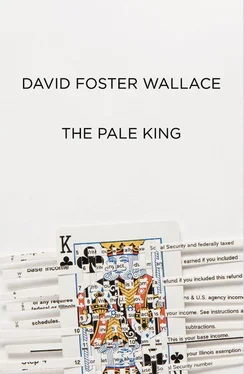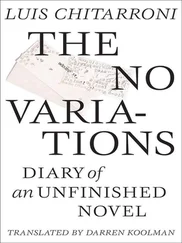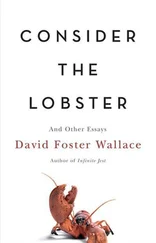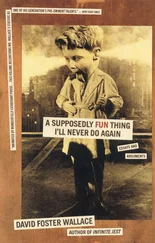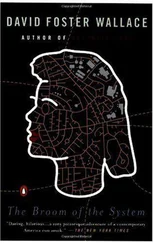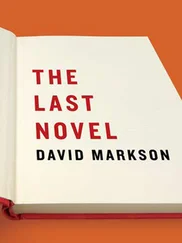David Wallace - The Pale King - An Unfinished Novel
Здесь есть возможность читать онлайн «David Wallace - The Pale King - An Unfinished Novel» весь текст электронной книги совершенно бесплатно (целиком полную версию без сокращений). В некоторых случаях можно слушать аудио, скачать через торрент в формате fb2 и присутствует краткое содержание. Год выпуска: 2011, Издательство: Little, Brown & Company, Жанр: Современная проза, на английском языке. Описание произведения, (предисловие) а так же отзывы посетителей доступны на портале библиотеки ЛибКат.
- Название:The Pale King: An Unfinished Novel
- Автор:
- Издательство:Little, Brown & Company
- Жанр:
- Год:2011
- ISBN:нет данных
- Рейтинг книги:3 / 5. Голосов: 1
-
Избранное:Добавить в избранное
- Отзывы:
-
Ваша оценка:
- 60
- 1
- 2
- 3
- 4
- 5
The Pale King: An Unfinished Novel: краткое содержание, описание и аннотация
Предлагаем к чтению аннотацию, описание, краткое содержание или предисловие (зависит от того, что написал сам автор книги «The Pale King: An Unfinished Novel»). Если вы не нашли необходимую информацию о книге — напишите в комментариях, мы постараемся отыскать её.
The Pale King
The Pale King: An Unfinished Novel — читать онлайн бесплатно полную книгу (весь текст) целиком
Ниже представлен текст книги, разбитый по страницам. Система сохранения места последней прочитанной страницы, позволяет с удобством читать онлайн бесплатно книгу «The Pale King: An Unfinished Novel», без необходимости каждый раз заново искать на чём Вы остановились. Поставьте закладку, и сможете в любой момент перейти на страницу, на которой закончили чтение.
Интервал:
Закладка:
At the Washington Square station, the official ‘scene of the accident’ —which, in a fatality, is legally deemed to be ‘[the] location at which death or injuries causing death are sustained’ —was listed at 65 yards off of the subway platform, in the southbound tunnel itself, at which point the CTA train was determined to have been traveling at between 51 and 54 miles per hour and portions of my father’s upper body impacted the iron bars of a built-in ladder protruding from the tunnel’s west wall — this ladder had been installed to allow CTA maintenance personnel to access a box of multi-bus circuitry in the tunnel’s ceiling — and the trauma, confusion, shock, noise, screaming, rain of small individual purchases, and nearly stampede-like evacuation of the platform as my father cut an increasingly forceful and high-velocity swath through the dense crowds of shoppers all disqualified even those few people who still remained there on the scene — most of them injured, or claiming injury — as ‘reliable’ witnesses for authorities to interview. Shock is evidently common in situations of graphic death. Less than an hour after the accident, all that any bystanders could seem to remember were screams, loss of holiday purchases, concern for personal safety, and vivid but fragmentary details as to my father’s affect and actions, various rippling things the onrushing air did to his topcoat and scarf, and the successive injuries he appeared to receive as he was borne at increasing speed towards the platform’s end and fully or partly collided with a wire mesh trash receptacle, several airborne packages and shopping bags, a pillar’s steel rivets, and an older male commuter’s steel or aluminum luggage cart — this last item was somehow knocked by the impact across the tunnel and onto the northbound tracks, causing sparks from that track’s third rail and adding to the stampeding crowds’ chaos. I remember that a young Hispanic or Puerto Rican man wearing what looked to be a type of tight black hairnet was interviewed while holding my father’s right shoe, a tasseled Florsheim loafer, of which the toe portion and welt were so abraded by the platform’s cement that the sole’s front portion had detached and was hanging loose, and that the man could not recall how he’d come to be holding it. He, too, was later determined to be in shock, and I can clearly remember seeing the Hispanic man afterward again in the triage area of the emergency room — which was at Loyola Marymount Hospital, only one or two blocks away from the Washington Square CTA station — seated in a plastic chair and trying to fill out forms on a clipboard with a ballpoint pen attached by a piece of white string to the clipboard, still holding the shoe.
And the wrongful-death litigation was, as mentioned, incredibly complex, even though it all technically never even proceeded past the initial legal stages of determining whether the City of Chicago, the CTA, the CTA’s Maintenance Division (the emergency brake’s cord in the car to which my father was forcibly appended was discovered to have been vandalized and cut, although expert opinion was divided on whether the forensic evidence represented a very recent cut or one of weeks’ duration. Evidently, the microscopic evaluation of severed plastic fibers can be interpreted in just about any way one’s interests lead one to interpret it), the train’s manufacturer of record, the train’s engineer, his immediate supervisor, AFSCME, and the over two dozen different subcontractors and vendors of various components of the various systems adjudged by the forensic engineers retained by our legal team to have played a part in the accident should, as respondents, be classified in the action as strictly liable, liable, negligent, or FEDD, the latter abbreviation standing for ‘failure to exercise due diligence.’ According to my mother, our legal team’s client liaison had confided to her that the multiplicity of named respondents was just an initial strategic gambit, and that we would ultimately be primarily suing the City of Chicago — which was, of course, my father’s employer, in an ironic twist — citing ‘common carrier tort law’ and a precedent case entitled Ybarra v. Coca-Cola to justify collapsing liability onto the shoulders of the respondent that could be shown to have been most cheaply and efficiently able to take reasonable steps to prevent the accident — presumably by having required more stringent quality-assurance of the doors’ pneumatics and sensors in the CTA’s contract with the train’s manufacturer of record, a responsibility which fell, in a further irony, at least partly to the City of Chicago’s bursar’s office’s cost systems division, in which one of my father’s own responsibilities had involved weighted evaluations of up-front cost versus liability exposure in certain classes of city agencies’ contracts — although fortunately, it turned out that CTA capital equipment expenditures were vetted by a different detail or team in cost systems. Anyhow, to my mother’s, Joyce’s, and my dismay, it became evident to us that our legal team’s major criterion for arguing for different companies’, agencies’, and municipal entities’ different liability designations involved those different possible respondents’ cash resources and their respective insurance carriers’ record of settlement in similar cases — that is, that the entire process was about numbers and money rather than anything like justice, responsibility, and the prevention of further wrongful, public, and totally undignified and pointless deaths. To be honest, I’m not sure that I’m explaining all this very well. As mentioned, the whole legal process was so complicated as to almost defy description, and the junior associate that the legal team had assigned to keep us apprised of developments and evolving strategies for the first sixteen months was not exactly the clearest or most empathetic counsel one could have hoped for. Plus it goes without saying that we were also all really upset, understandably, and my mother — whose emotional health had always been pretty delicate since the breakdown or abrupt changes of 1971–72 and subsequent divorce — was going in and out of what could probably be classified as disassociative shock or conversion reaction, and had actually moved back into the house in Libertyville that she’d shared with my father prior to their separation, supposedly ‘just temporarily’ and for reasons that changed each time Joyce or I pressed her on whether this moving back there was a very good idea for her, and she was generally not in good shape at all, psychologically speaking. In fact, after only the first round of depositions in an ancillary lawsuit between one of the respondents and its insurance company over just what percentage of the legal costs for the respondent’s defense against our ongoing suit were covered in the respondent’s liability policy with the insurance company — plus, to further complicate matters, a former partner in the lead law firm that was representing my mother and Joyce was now representing the insurance company, whose national headquarters turned out to be in Glenview, and there was a subsidiary set of briefs and depositions in that case concerning whether this fact could in any way constitute a conflict of interest — and procedurally, this ancillary suit had to be resolved or settled before preliminary depositions in our own suit — which by that point had evolved into the twin classifications of civil liability and wrongful death, and was so complex that it took almost a year for the team’s litigators even to agree on how to file it correctly — such that, by this point, my mother’s emotional state reached the point where she elected to discontinue all litigation, a decision which privately upset Joyce very much but which she, Joyce, was legally powerless to enjoin or influence, and there was then a very complicated domestic struggle in which Joyce kept trying, without my mother’s knowledge, to get me to reinitiate the suit with myself, who was over twenty-one and the decedent’s dependent and son, as sole plaintiff. But for complicated reasons — chief among them that I had been listed as a dependent on both my parents’ 1977 federal tax returns, which, in my mother’s case, would have been promptly disallowed in even a routine office audit, but which escaped notice in the more primitive Examinations environment of the Service in that era — it emerged that in order to do this, I would have had to have my mother declared legally ‘non compos mentis,’ which would have required a mandatory two-week psychiatric hospitalization for observation before we could obtain a legal declaration from a court-authorized psychiatrist, which was something no one in the family was even close to having the stomach for. So after sixteen months, the whole litigation process ended, with the exception of our former legal team’s subsequent suit against my mother for recovery of fees and expenses that, to all appearances, the contract that Joyce and my mother signed had explicitly waived in lieu of a 40 percent contingency fee. The recondite arguments by which our former team was attempting to have this contract declared null and void because of some ambiguity in the legal language of one of their own contract’s subclauses were never explained or made clear enough to me to be able to tell if they were anything more than frivolous or not, as at this juncture I was in my final semester at DePaul and also in the process of recruitment by the Service, and my mother and Joyce had to hire yet another lawyer to defend my mother against the former lawyers’ suit, which still, if you can believe it, still drags on to this day, and is one of the main reasons my mother will give as a rationale for having become a virtual shut-in in the Libertyville house, where she still now resides, and for letting the home’s telephone service lapse, although evidence of some kind of major psychological deterioration had already appeared much earlier, actually probably even in the midst of the original litigation and her moving back home to my father’s house following the accident, with the first psychological symptom I can remember involving her growing preoccupation with the welfare of the birds in a nest of finches or starlings that for years had been up over one of the joists on the large, open wooden porch, which had been one of the chief attractions of the Libertyville house when my parents had made the original decision to move there, the obsession then progressing from that one nest to the neighborhood’s birds in general, and she began having more and more standing and tube-style feeders installed on the porch and the front lawn and buying and leaving out more and more seed and then eventually also all different kinds of human food and various ‘bird supplies’ for them on the steps of the porch, at one low point including tiny pieces of furniture from a dollhouse from her girlhood in Beloit, which I knew she had treasured as memorabilia as I’d heard her recount all sorts of childhood anecdotes to Joyce about how much she’d treasured the thing and had collected miniature furniture for it, and which she’d kept for many years in the storage room of the Libertyville house, along with a lot of memorabilia from my own early childhood in Rockford, and Joyce, who has remained my mother’s loyal friend and sometimes virtual nurse — even though she did, in 1979, fall head over heels in love with the attorney who helped them close Speculum Books under Chapter 13 provisions, and is now married to him and lives with him and his two children in Wilmette — Joyce agrees that the tedious, complex, cynical endlessness of the accident’s legal fallout was a large part of what kept my mother from processing the trauma of my father’s passing and working through some of the prior, 1971-era unresolved emotions and conflicts which the accident had now brought rushing back up to the surface. Although at a certain point you have to just suck it up and play the hand you’re dealt and get on with your life, in my own opinion.
Читать дальшеИнтервал:
Закладка:
Похожие книги на «The Pale King: An Unfinished Novel»
Представляем Вашему вниманию похожие книги на «The Pale King: An Unfinished Novel» списком для выбора. Мы отобрали схожую по названию и смыслу литературу в надежде предоставить читателям больше вариантов отыскать новые, интересные, ещё непрочитанные произведения.
Обсуждение, отзывы о книге «The Pale King: An Unfinished Novel» и просто собственные мнения читателей. Оставьте ваши комментарии, напишите, что Вы думаете о произведении, его смысле или главных героях. Укажите что конкретно понравилось, а что нет, и почему Вы так считаете.
